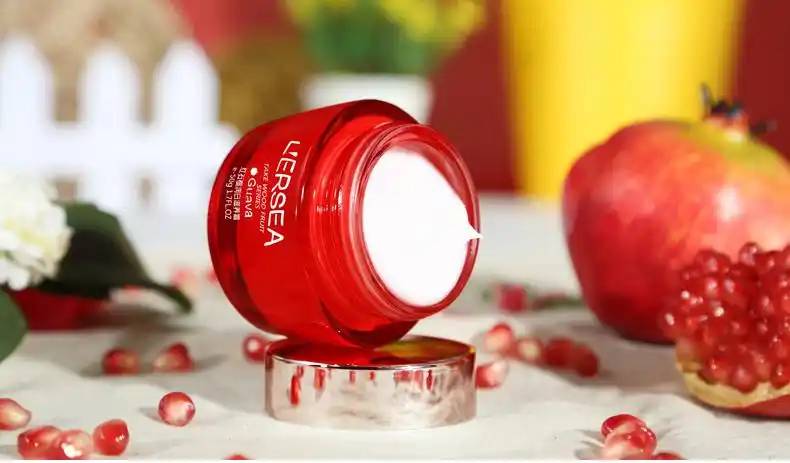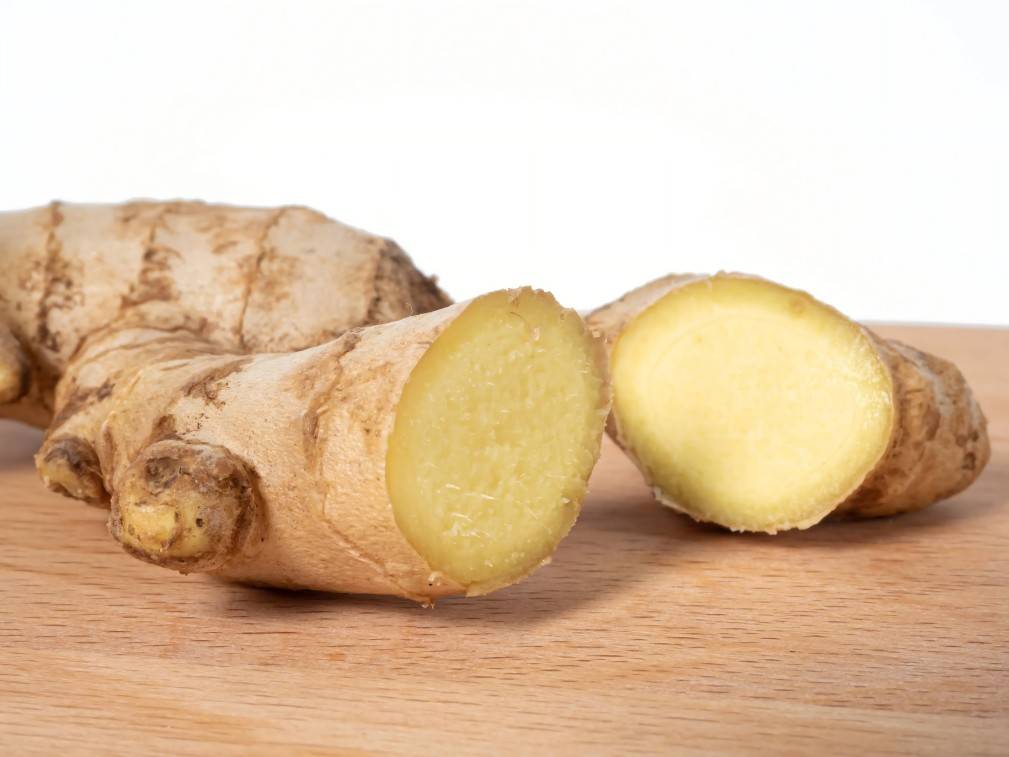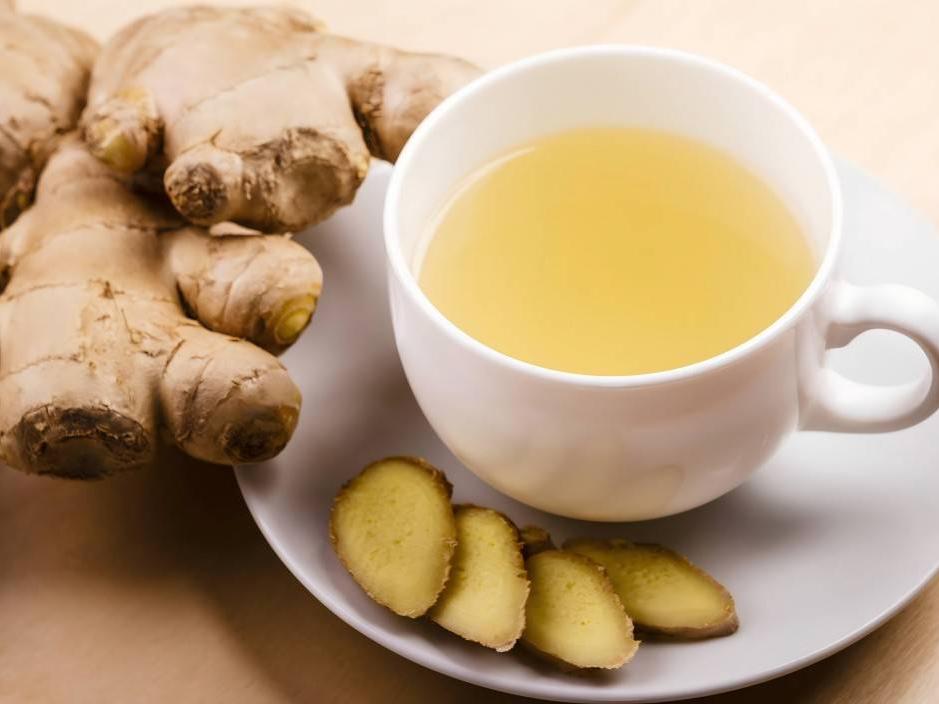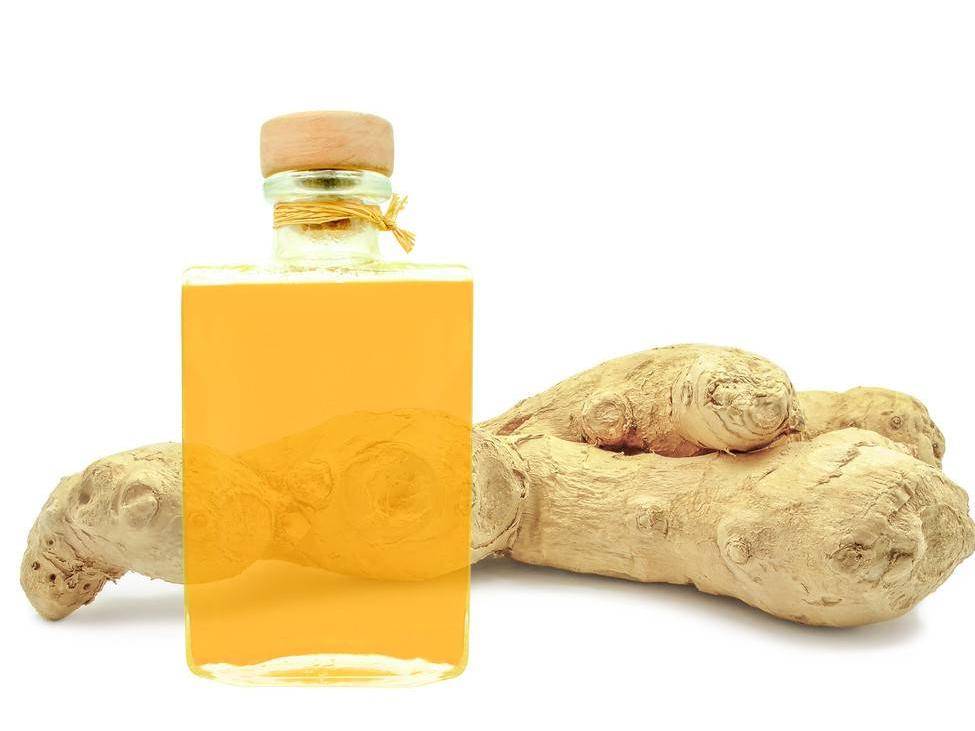What Is the Benefit of Ginger for Chinese?
Ginger (Zingiber officinale Roscoe) is a perennial herbaceous plant belonging to the ginger family in the order of monocotyledonous plants of the angiosperms. It has a long history of cultivation in China. In the Analects, it is recorded that "ginger should not be withdrawn or consumed excessively", and in the "Record of Famous Doctors", it is also recorded that "ginger can eliminate wind evil, cold and heat, typhoid fever, headache, nasal congestion... and stop vomiting". This indicates that ginger has been widely used as a food and medicinal material since ancient times. With the continuous advancement of science and technology, people have conducted in-depth research on the nutrition and functional components of ginger, further confirming its high medicinal value and health benefits. Various methods have been used to extract effective ingredients from ginger to promote its deep processing and comprehensive utilization.
1 The medicinal value of ginger in traditional Chinese medicine
Ginger is widely used in traditional Chinese medicine, and its clinical effects mainly include sweating and relieving symptoms, warming and stopping vomiting, resolving phlegm and cough, and reducing spleen swelling. It is mainly used to treat external wind cold, stomach cold and vomiting.
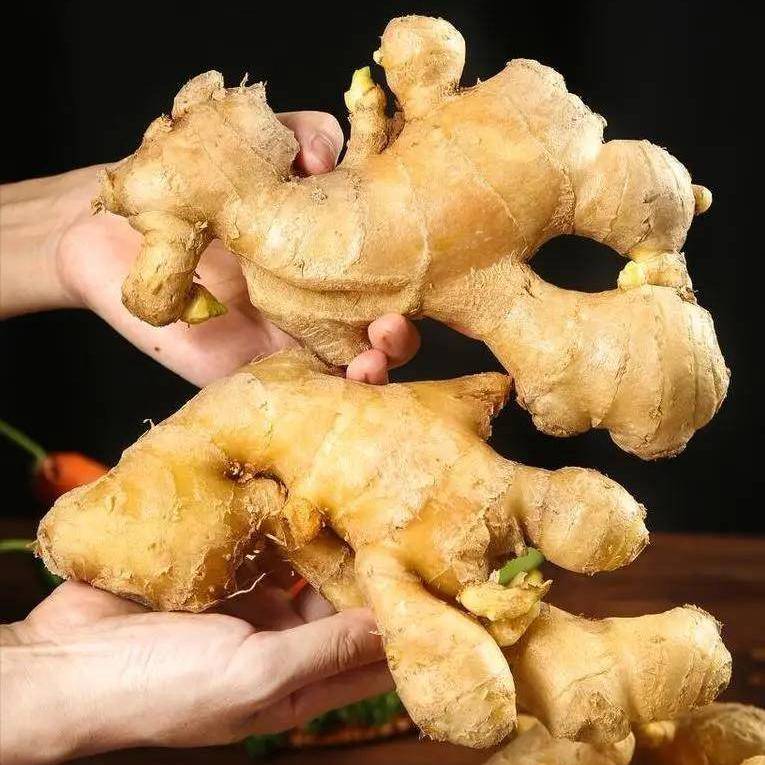
1.1 Sweating breakdown table
Ginger is classified as a detoxifying agent in traditional Chinese medicine, and its main function is to dispel external heat and dispel coldness. In the "Treatise on Cold Damage", the modified Guizhi Tang and Daqinglong Tang formulas use ginger to assist Guizhi and ephedra in dispelling wind and cold as adjuncts, exerting the effect of relieving muscle and dispersing the pathogenic factors of external manifestation. In the "Compendium of Materia Medica", the perilla ginger soup, with its pungent and warm characteristics, assists perilla leaves in enhancing sweating, relieving surface coldness, and dispersing cold effects. It is not only easy to take, but also beneficial for stomach qi and resisting evil winds. Huizhitang Experience Prescription: In the Five God Soup, Jingjie, Suye and Ginger are used in the same amount. After adding brown sugar, they are boiled together with tea leaves to become a traditional Tonic Diet for dispersing wind, dispersing cold, sweating and relieving external symptoms [5].
1.2 Warm stop vomiting
Ginger is good at warming and stopping vomiting. It is known as the "holy medicine of vomiting" in folk medicine and can treat cold vomiting, heat vomiting, motion sickness vomiting, and dry vomiting. The Ginger Pinellia Decoction in the "Synopsis of the Golden Chamber" is a combination of Pinellia ternata and ginger, which is used to stimulate appetite and promote digestion. It is used to treat stomach qi disharmony and nausea. In the book "Qi Xiao Liang Fang", Ginger Xiexin Tang is mainly used to treat patients with typhoid fever who sweat, have disharmony in the stomach, have a hard and strong chest, have foul breath, have water vapor under the abdomen, and have difficulty with abdominal thunder. According to folk experience, cutting fresh ginger into small pieces and sticking them on the right side of the Neiguan acupoint can effectively prevent motion sickness and vomiting. Boiling ginger with tangerine peel can alleviate symptoms of dry vomiting. Someone analyzed 305 antiemetic formulas in the "Dictionary of Traditional Chinese Medicine Formulas" and found that 174 Chinese herbal medicines were involved in the formulas, among which ginger ranked 7th with a frequency of 84 occurrences [8].
1.3 Warm the lungs and relieve cough
The "Record of Famous Doctors" records that "ginger slices remove phlegm and lower qi, warm yang and transform..." and have the effect of warming the lungs, stopping cough and resolving phlegm. In the Taiping Shenghui Formula, Banxia Powder uses ginger to warm the lungs and stomach, help Banxia reduce stress, and at the same time, treat the toxicity of Banxia. It is mainly used to treat damp phlegm and cough. In the "Hezhi Ju Fang", Suzi Jiangqi Tang uses ginger to warm and dissolve cold phlegm, reduce reflux and cough, and is mainly used for treating symptoms such as phlegm and saliva stagnation, wheezing and weakness. In the "Compendium of Materia Medica", ginger and maltose soup is used to warm the lungs, reduce phlegm and cough, and moisten the lungs with maltose. It is used for symptoms such as cough and phlegm caused by deficiency cold. Ginger, walnut meat, northern almonds, and honey are also used in folk medicine to make honey pills, which can treat deficiency, moisten the lungs, relieve cough and asthma.

1.4 Reduction of Spleen Swelling
Ginger has the effects of warming the spleen and stomach, reducing swelling and promoting diuresis. It can be used to treat symptoms such as spleen and stomach deficiency and cold, decreased appetite, bloating in the abdomen, chest and rib pain, and edema caused by spleen deficiency and dampness. According to the "Cold Damage Hammer Method", 500g of ginger is used, the residue is mashed to retain juice, slowly stir fried until moist, wrapped in silk around the affected area, and ironed step by step. After a long time, it can suddenly become wider and faster. The Pingwei San in the "Taiping Huimin Heji Ju Fang" uses ginger as a medicinal herb, which can harmonize the spleen and stomach, assist the main medicine in drying dampness and strengthening the spleen, and relieve swelling and fullness. In the "Zhongzang Jing", "Wupi Yin" uses ginger skin to dispel water evil, invigorate the spleen and dispel dampness, and promote diuresis and reduce swelling. In the "Essentials of the Medical Forest Compilation", it is also mentioned that "ginger skin is pungent and cold, and many skins are contrary to their nature, so it is cold. Using the skin to reach the skin can make it pungent, so it can treat water swelling and remove the wind and heat from the skin" [12]. Nowadays, some people use ginger as the main raw material to prepare solid beverages, which have the effect of promoting diuresis and reducing swelling [13].
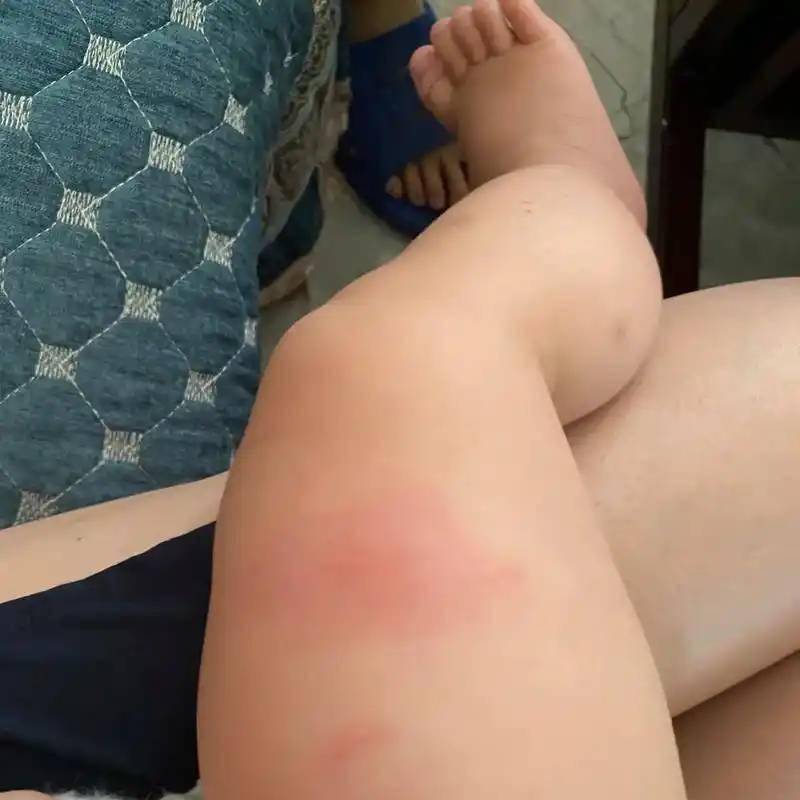
1.5 Blood detoxification
Ginger can warm the blood vessels and has the effect of relieving the venom of poisonous insects, snakes, and beasts. Can be used for postpartum blood stasis, strange pulse overflow, snake spider bites and other diseases. According to Yang's "Milk Production", using five liang of ginger, eight liters of water, boiling three liters, and taking three portions can treat postpartum blood stasis and heart failure. In Xia Ziyi's "Qi Ji Fang", half a cup of natural ginger juice and half a cup of water are taken orally to treat the strange condition of excessive blood flow and swollen skin in the hair and orifice joints. According to the "Qian Jin Fang", applying ginger powder to the bite site of a pit viper can relieve snake venom; Slicing ginger slices and applying them to spider bite wounds can alleviate insect venom [14]. In the short drama, it is also mentioned that there is a formula for relieving lettuce poisoning by drinking ginger juice.
1.6 Other benefits
The medicinal value of ginger goes far beyond the above-mentioned effects. Through reviewing numerous previous research results, it has been found that ginger can also drive away cholera, treat external injuries, treat eye swelling and toothache, relieve malaria and cold heat exchange, and stop cold diarrhea. The "Mei Shi Fang" records that ginger can treat symptoms such as cholera induced death and abdominal distension, while the "Wai Tai Mi Yao" also records that ginger can treat diseases such as cholera induced muscle rotation and abdominal death. The "Fu Shou Fang" states that chewing ginger can heal knife and axe sores; In "Leisure Diary", taking natural ginger juice, boiling it into a paste, and applying it to both ears can treat frostbite; The "Puji Formula" records that ginger slices with skin attached, coated with alum powder, roasted and finely ground, can be used to treat various sores, hemorrhoids, and long-term scab formation.
In the "Surgical Heart Method", ancient copper coins are used to scrape ginger and extract juice, and eye drops are used to treat red eye swelling. It has the effect of today's point and tomorrow's recovery. In the "Puji Fang", old ginger tiles are baked and dried alum powder is added to wipe the toothache area, which can be stopped immediately. In the Yi Jian, it is recorded that four liang of ginger, mashed with juice, and exposed overnight can be used to treat malaria, cold and heat, and phlegm accumulation in the spleen and stomach. In the book "Dietary Therapy", ginger is boiled and ground into powder, and dried ginger powder is divided into equal parts to prevent cold diarrhea. In addition, there are also records stating that ginger can alleviate difficult and complicated conditions such as underarm body odor and vitiligo.
2 The medicinal value of ginger in modern pharmacology
Modern pharmacological studies have confirmed that ginger contains a variety of bioactive ingredients that have certain effects such as antibacterial and anti-inflammatory, analgesic, antioxidant, inhibition of tumor cell proliferation, and lowering blood sugar and blood lipids [17].
2.1 Antibacterial, anti-inflammatory and analgesic
Ginger contains ingredients such as gingerol and terpene volatile oil. These substances have an inhibitory effect on most bacteria and have varying degrees of antibacterial, anti-inflammatory and analgesic effects. Li Ping et al. [18] used an ultrasonic method to extract gingerol and carried out a bacteriostatic test on 9 microorganisms including Escherichia coli. The results showed that gingerol had a certain bacteriostatic effect on the test gram-negative and gram-positive bacteria, but had no inhibitory effect on brewer's yeast, Saccharomyces cerevisiae, Aspergillus niger and Penicillium. Li Jiaqi et al. [19] selected the ethanol extracts of fresh ginger, dried ginger, and ginger candy for antibacterial activity research, and confirmed that the research subjects had inhibitory effects on Staphylococcus aureus, Escherichia coli, Pseudomonas aeruginosa, and Bacillus subtilis. The antibacterial effect was related to the content of gingerol.
Zhang Yunling et al. [20] showed that gingerol extract can inhibit Helicobacter pylori (Hp). Among them, 6-gingerol has a strong anti-Hp effect in vitro, with a minimum inhibitory concentration of 1 mg/mL. Wang Guilin et al. [21] used xylene to cause ear swelling in mice and egg white induced rat foot swelling to observe the effect of ginger oil on acute inflammation. The results showed that ginger volatile oil can significantly inhibit the ear swelling caused by xylene in mice and the egg white foot swelling in rats, indicating that ginger volatile oil has a significant anti-inflammatory effect. Zhang Xu et al. [22] showed that ginger water and alcohol extracts can significantly inhibit inflammation and significantly increase the pain threshold of model mice within a certain concentration range, indicating that ginger water and alcohol extracts have analgesic effects in addition to their obvious antibacterial and anti-inflammatory effects.
2.2 Antioxidant
Ginger essential oil, flavonoids, polyphenols and gingerol in ginger have a certain ability to scavenge free radicals, indicating that ginger has a strong antioxidant effect. Studies by Xing Ying et al. [23] and Duan Bin et al. [24] have confirmed that the active substances in ginger have a significant scavenging effect on hydroxyl radicals and DPPH radicals, and that the scavenging ability for ABTS radicals is closely related to concentration.
A study by Su Jun et al. [25] showed that ginger extract has a protective effect on oxidative stress damage to human umbilical vein endothelial cells (HUVEC) cultured in vitro, and can reduce H2O2-induced oxidative stress damage to HUVEC in a concentration-dependent manner. The reason for this may be related to the antioxidant stress of ginger essential oil, gingerol and diphenylheptane compounds contained in ginger. Sun Xin [26] used dichloromethane to perform liquid-liquid extraction on ginger extract, and studied the scavenging abilities of different polar fractions for DPPH and ABTS free radicals and the reducing power of FRAP iron ions. Through HPLC-MS mass spectrometry information and analysis of relevant literature, it was speculated that the dichloromethane extract contains six gingerols, of which 6-gingenol has the strongest antioxidant capacity. Mei et al. [27] used a chemiluminescence method to determine the scavenging effect of ginger crude flavonoids on superoxide anion radicals, hydroxyl radicals, and hydrogen peroxide, and found that ginger crude flavonoids have a good antioxidant effect.
2.3 Inhibition of tumor cell proliferation
With the deepening of pharmacological research on ginger, it has been found that ginger active substance extracts have a certain inhibitory effect on tumor cell proliferation. Tian Chengpiao et al. [28] used the MTT method to test ginger extracts to inhibit the proliferation of three human tumor cell lines: HCT116, Hep G2 and Skov3. The results showed that the ginger ethanol extract had the most prominent effect in the HCT116 cell proliferation inhibition experiment, and also had a good inhibitory effect on Skov3 cells. Liu Xin et al. [29] used supercritical CO2 fluid extraction to extract the active ingredients of ginger and used the MTT method to detect its inhibitory effect on the activity of different tumor cells. The results showed that the 8-gingerol and 10-gingerol extracted and separated from ginger had a good inhibitory effect on the activity of various tumor cells, especially 10-gingerol, which was the most effective.
The anti-tumor mechanism may be related to its effect on the phosphorylation levels of ERK and P38 in the MAPK pathway, which causes cell cycle G1 phase arrest. Wang Yuxia et al. [30] used a natural drug combination of ginger and galangal to study the inhibitory effect on S180 sarcoma and Ehrlich ascites carcinoma (EAC) in mice. The results showed that the high-dose double-ginger composition had the highest inhibition rate of tumor proliferation. In addition, ginger also plays an important role in adjuvant anti-tumor therapy. Liu Cuifang et al. [31] found that ginger mouthwashes and ginger compresses applied to acupoints in combination with droperidol were effective in relieving the nausea and vomiting caused by chemotherapy in breast cancer patients. Cheng Menghui [32] used lemon and ginger in three ways: orally, gargling, and aromatherapy, to intervene in the CINV symptoms of breast cancer patients and found that ginger was significantly effective in treating the symptoms of nausea, dry retching, and acute vomiting.
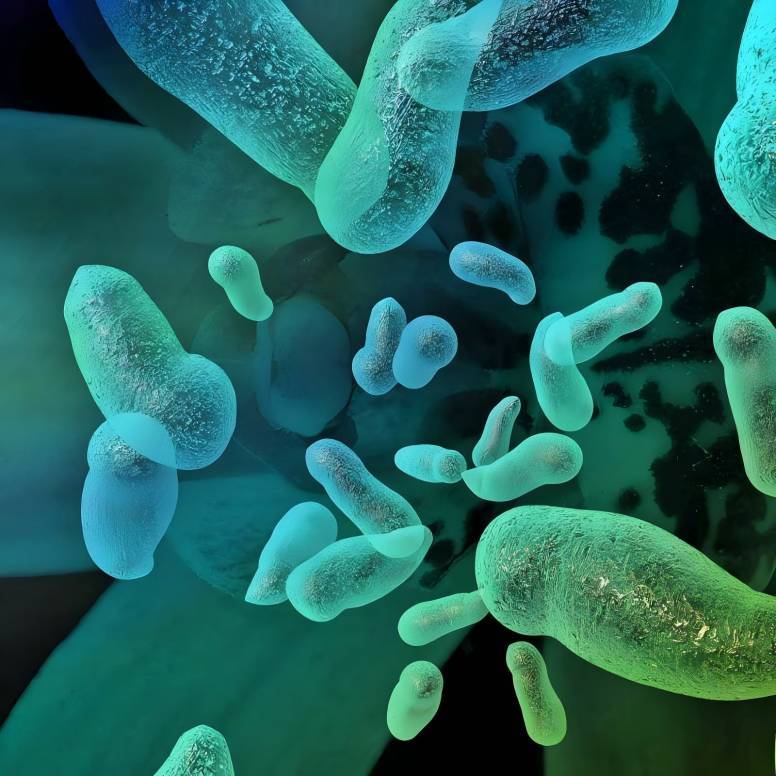
2.4 Lowering blood sugar and blood lipids
Ginger, as a traditional cooking spice, has significant effects in lowering blood sugar and blood lipids. In terms of lowering blood sugar, Tahir et al. [33] found that ethyl acetate extract of ginger can promote glucose uptake, stimulate the expression of glucose transporter-4 and inhibit protein glycosylation, which has an anti-diabetic effect. Tabibi et al. [34] found that powdered ginger can improve blood glucose index, TAC, PON-1 activity, etc. in patients with type 2 diabetes.
Li Yuehua et al. [35] fermented ginger into black ginger and extracted gingerol from it to study its hypoglycemic effect on hyperglycemic mice. The results showed that gingerol had a significant hypoglycemic effect on hyperglycemic mice induced by alloxan, and the higher the blood glucose level, the greater the decrease in blood glucose after the effect. Liu Fuyue [36] showed that ginger α-glucosidase inhibitors have a significant hypoglycemic effect 0.5 h after a starch load in normal mice, and can increase the serum insulin level after a meal in normal mice, so they have a good therapeutic effect on hyperglycemic mice. In terms of lowering blood lipids, Wu Caixia et al. [37] confirmed that the active components of ginger can significantly reduce the LDL-C and TG levels and increase the HDL-C levels in rats with hyperlipidemia, thereby preventing atherosclerosis. Bhandari et al. [38] confirmed as early as the late 1990s that ginger can lower cholesterol and reduce the degree of atherosclerosis in rabbit arteries. Chen Kunnan et al. [39] also showed that gingerol extract can reduce blood viscosity, has an anti-ADP-induced platelet aggregation effect, and can delay blood clotting.
3 Prospects for the use of ginger
3.1 The medicinal value of ginger in traditional Chinese medicine still needs to be further explored
Ginger is a commonly used clinical herb that is included in various editions of the Chinese Pharmacopoeia. According to statistics, ginger is used in more than 30 of the 113 formulas in Shanghan Lun [40]; Wenyi Lun contains 33 formulas, 17 of them contain ginger [41]; among the 788 prescriptions in the “Taiping Huimin Heji Bureau Formula”, 224 of them contain ginger, accounting for 28.4%, and 11 of them use ginger as the main ingredient [42]. This fully demonstrates the frequency of use and wide range of effects of ginger in traditional medicine, and its unique role in the treatment and prevention of various diseases. Although the properties of ginger are now more fully understood and appreciated, its medicinal value has not been fully tapped, judging from the development of traditional Chinese medicine over the past 5,000 years. In particular, the compatibility of ginger in various prescriptions, dosage and usage, disease-curing mechanism, and ginger acupressure therapy are still in the exploratory stage, and the wonderful effects of ginger in many folk prescriptions have yet to be further clarified. This requires continued in-depth research and summarization of the use and pharmacological mechanisms of ginger in traditional medicine to lay a theoretical foundation for the better clinical application of ginger.
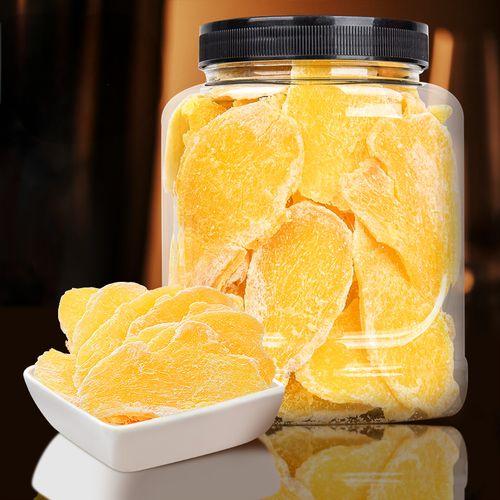
3.2 Modern processing technology and broad application prospects
China is the country with the largest ginger planting area, highest total production, and most exports in the world [43]. In recent years, modern processing technology for ginger has continued to mature. Combining the nutritional and medicinal value of ginger, various deep processing products have emerged one after the other, which to a large extent has broadened the scope of comprehensive utilization of ginger and has broad market prospects. Using the active ingredients in ginger to prepare various functional foods can not only meet people's needs for nutrients, but also exert its health care effects, such as ginger tea, ginger wine, ginger candy, ginger candied fruit, ginger drinks, etc. Using the aromatic chemicals in ginger, various condiments can be prepared, which can not only improve the taste of the meal, but also promote the condiment industry towards deep processing, commercialization, and industrialization.
Extracting various active ingredients from ginger to prepare related drugs can play a role in antibacterial and anti-inflammatory, improving gastrointestinal function, relieving nausea and colds, lowering blood sugar and blood fat, tumor treatment, and enhancing the body's immunity. The antioxidant active substances in ginger can be used to prepare natural preservatives for fruits and vegetables, which can extend the storage period of agricultural and sideline products. Processing and producing commonly used daily chemical products such as shampoo, toothpaste, and cosmetics can stimulate microvascular circulation, promote hair follicle tissue growth, and repair aging cells, achieving the effect of assisting in the treatment of dandruff, hair loss, and gum bleeding. The value of industrial utilization is considerable. Therefore, as a natural species with a wide range of sources and distinctive food and medicinal properties, ginger is of great research significance and has great application value in the food, health product, and pharmaceutical industries.
References
[1] Tao Hongjing. Ming yi bie lu [M]. Beijing: China Traditional Chinese Medicine Publishing House, 2013.
[2] Yu Zipeng, Huang Zetian, Cui Wenjia, et al. Research progress on the nutritional composition of ginger and its processed products [J]. China Fruits and Vegetables, 2021, 41(01): 15-20.
[3] Zhang Zhongjing. Shanghanlun [M]. Beijing: China Medical Science and Technology Press, 2018.
[4] Ni Zhumo. Ben cao hui yan [M]. Shanghai: Shanghai Science and Technology Press, 2000.
[5] Tao Chengxi. Hui zhitang jingyan fang [M]. Beijing: Zhongyi Guji Chubanshe, 1994.
[6] Guo Aichun, Wang Yuxing. Jingui Yaolue [M]. Beijing: China Traditional Chinese Medicine Publishing House, 2018.
[7] Dong Su, Ke Jia. Qixiao Liangfang [M]. Beijing: China Traditional Chinese Medicine Publishing House, 1998.
[8] Du Xiuwei, Wang Xin, Nie Ke. Analysis of the medication rules of the formulae for treating vomiting in the “Dictionary of Traditional Chinese Medicine Formulae” [J]. Chinese Journal of Experimental Formulae, 2015, 21 (23): 197-201.
[9] Wang Huaiyin, Zheng Jinsheng, Wang Weigang, et al. Taiping Shenghuifang [M]. Beijing: People's Medical Publishing House, 2016.
[10] Liu Wenyu. 5 cases of ginger treatment of respiratory diseases [J]. Chinese Folk Therapies, 2017, 25(12): 100.
[11] Tan Chunyu. Zhongzangjing [M]. Beijing: People's Medical Publishing House, 2007.
[12] Wang Pu. Yilin Zhanyou Tan Yuan [M]. Beijing: China Traditional Chinese Medicine Publishing House, 2015.
[13] Zhang Huachuan. A ginger-based solid beverage for promoting diuresis and reducing edema and its preparation method [P]. Anhui: CN106689957A, 2017-05-24.
[14] Sun Simiao. Qianjinfang [M]. Chengdu: Sichuan University Press, 2018.
[15] Wang Tao. Waityimiyao [M]. Beijing: China Medical Science and Technology Press, [16] Zhu Yun, et al. Pu Ji Fang [M]. Beijing: People's Medical Publishing House, 1959.
[17] Zhang Shujuan, Zhang Yugui, Xin Erdan, et al. Research progress on the pharmacological effects of ginger [J]. Journal of Gansu University of Traditional Chinese Medicine, 2020, 37 (06): 79-81.
[18] Li Ping, Shu Zhan, Hu Chuyao, et al. Extraction of gingerol by ultrasonic method and its antibacterial activity [J]. Chinese Condiments, 2017, 42(10): 160-164+175.
[19] Li Jiaqi, Zheng Yinan, Wang Kun, et al. Antioxidant and antibacterial activities of ethanol extracts of ginger products [J]. Natural Product Research and Development, 2015, 27(03): 480-484.
[20] Zhang Yunling, Zheng Yimin, Hu Shaonan, et al. Study on the antibacterial effect of 6-gingerol on Helicobacter pylori. Modern Food Science and Technology, 2013, 29(06): 1259-1261+1305.
[21] Wang Guilin, Zhu Lu. Anti-inflammatory effect of ginger oil [J]. Pharmacology and Clinical of Traditional Chinese Medicine, 2006 (05): 26-28.
[22] Zhang Xu, Zhao Fenqin. Anti-inflammatory and analgesic effects of ginger extract [J]. Journal of Henan University (Medical Sciences), 2015, 34 (01): 26-28.
[23] Xing Y, Zuo J. Comparison of the active ingredients and antioxidant properties of different parts of ginger [J]. Chinese Condiments, 2020, 45(12): 48-51.
[24] Duan Bin, Ge Yonghong, Li Canying, et al. Extraction of ginger essential oil and in vitro antioxidant activity research [J]. Packaging and Food Machinery, 2018, 36 (06): 25-30.
[25] Su Jun, Ma Ping, Luo Jianxun, et al. Experimental study on the anti-oxidative stress of ginger extract [J]. Southwest National Defense Medicine, 2018, 28(12): 1145-1148.
[26] Sun Xin. Research on the antioxidant and nitrite scavenging activities of ginger extract [D]. Hangzhou: Zhejiang University, 2018.
[27] Mei Xing, Wang Qiong, Tian Rui, et al. Comparison of the antioxidant activities of crude flavonoids from different varieties of ginger [J]. Modern Food Science and Technology, 2017, 33 (12): 68-76.
[28] Tian Chengpiao, Zhu Weiwei, Song Yaling, et al. Comparative study on the antioxidant, antibacterial and antitumor activities of ginger and vinegar-pickled ginger [J]. Food Industry Science and Technology, 2019, 40(14): 18-23.
[29] Liu Xin, Zhang Hongwei, Fu Ruoqiu, et al. Anti-tumor effect and mechanism of gingerol active ingredients in ginger [J]. Journal of the Third Military Medical University, 2017, 39(09): 884-890.
[30] Wang Yuxia, Guo Xingke, Li Yuanyuan, et al. Anti-tumor and anti-emetic effects of a combination of galangal and ginger [J]. Journal of Taishan Medical College, 2016, 37(07): 735-737.
[31] Liu Cuifang, Su Yali, Zhao Meng, et al. Efficacy of ginger combined with tropisetron for chemotherapy-related nausea and vomiting in breast cancer [J]. Chinese Journal of Modern Nursing, 2020, 26(33): 4657-4660.
[32] Cheng Menghui. Observation of the clinical efficacy of lemon ginger in relieving chemotherapy-related nausea and vomiting [D]. Guangzhou: Guangzhou University of Traditional Chinese Medicine, 2018.
[33]Tahir A A,Sani N F,Murad N A,et al.Combined gingerextract & Gelam honey modulate Ras/ERK andPI3K/AKT pathway genes in colon cancer HT29cells[J]. Journal of Nutrition,2015,14:31.
[34]Tabibi H,Imani H,Atabak S,et al.Effects of ginger on serum lipids and lipoproteins in peritoneal dialysis patients:a randomized controlled trial[J].Peritoneal Didysis International Journal of the International Society for Peritoreal Dialysis,2016,36(02):140.
[35] Li Yuehua, Ning Yuebao. Extraction of black ginger shogaols and study of its hypoglycemic effect in mice [J]. Jilin Animal Husbandry and Veterinary Medicine, 2020, 41(03): 91-93.
[36] Liu F Y. Preliminary screening of hypoglycemic substances in ginger [D]. Tai'an: Shandong Agricultural University, 2015.
[37] Wu C X, Wei X B, Ding H. Study on the lipid-regulating effect of the effective part of ginger [J]. Qilu Pharmaceutical Affairs, 2005 (03): 174-176.
[38] Bhandari U, Sharma JN, Zafar R. The protective action of ethanol-ginger (Zingiber officinale) extract in cholesterol-fed rabbits [J]. Journal of Ethnopharmacology, 1998, 61(02): 167-171.
[39] Chen Kunnan, Yang Shulin. Further discussion on the anticoagulant effect of gingerol extract [J]. Pharmacology and Clinical of Traditional Chinese Medicine, 1997 (05): 31-32.
[40] Zhang Liyan, Zhang Ruiyang, Jiang Xiaomin. A case study on the application of ginger in Shanghan Lun [J]. Jiangxi Traditional Chinese Medicine, 2021, 52 (08): 17-18.
[41] Jin Shouqiang. The wonderful use of ginger in the prescriptions of Wen Yao Lun [J]. Journal of Shaanxi College of Traditional Chinese Medicine, 1990 (01): 5-7.
[42] Dai Yinghan, Zhu Chuangjian, Yu Cuimei, et al. A brief analysis of the medicinal research on ginger in Taiping Huimin Heji Bureau Fang [J]. Chinese Medicine Clinical Research, 2021, 13(10): 27-28.
[43] Wu Man, Zhao Banghong, Zong Yixiang. Analysis of the world ginger production layout and trade pattern [J]. Northern Horticulture, 2019(10): 141-150.


 English
English French
French Spanish
Spanish Russian
Russian Korean
Korean Japanese
Japanese